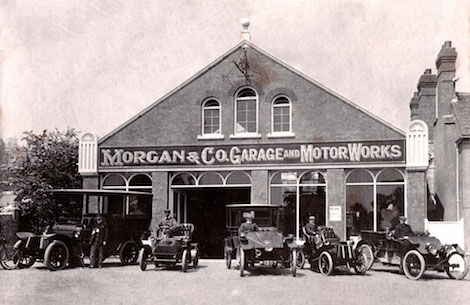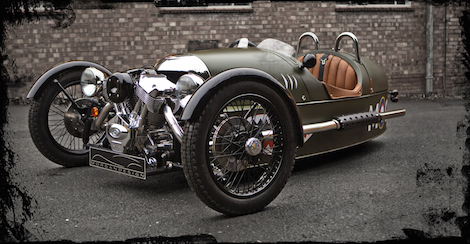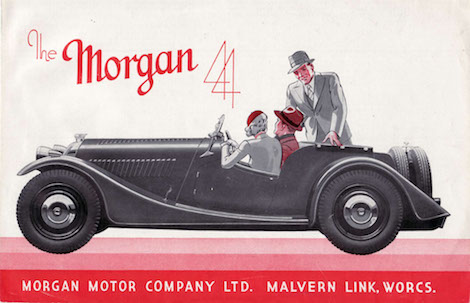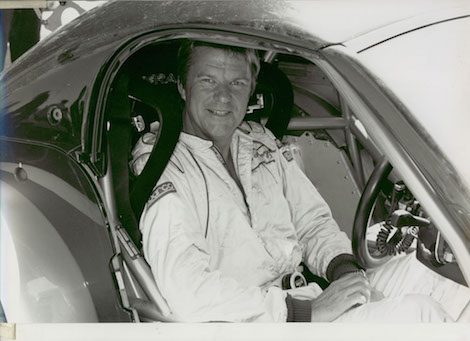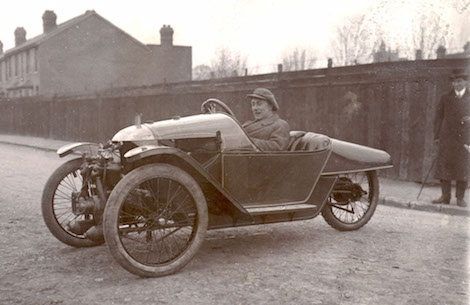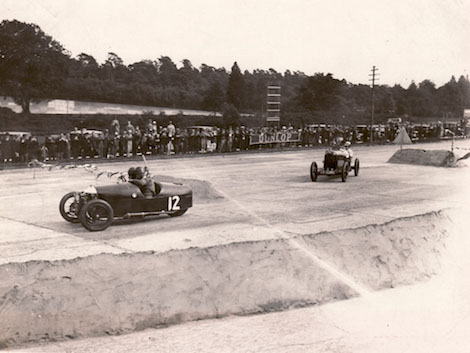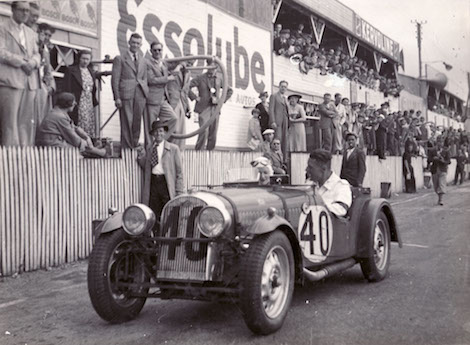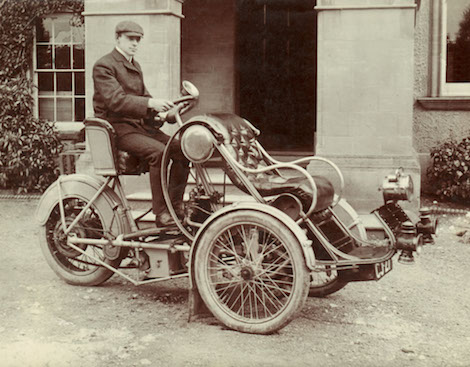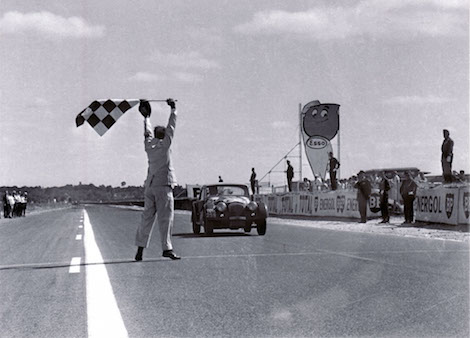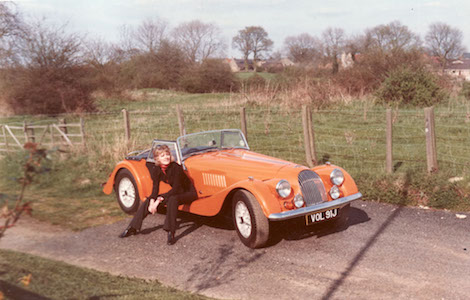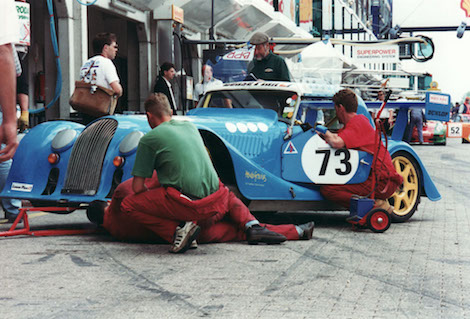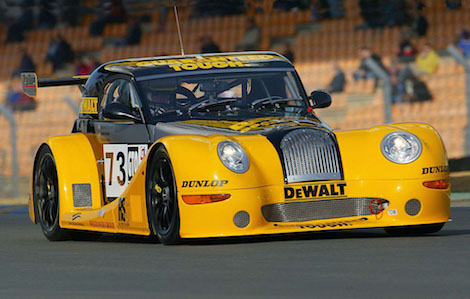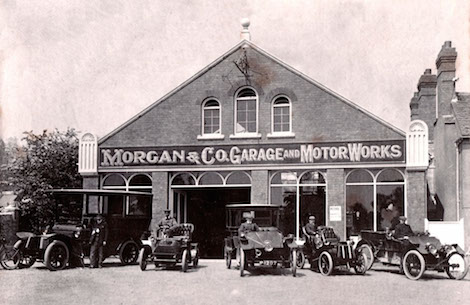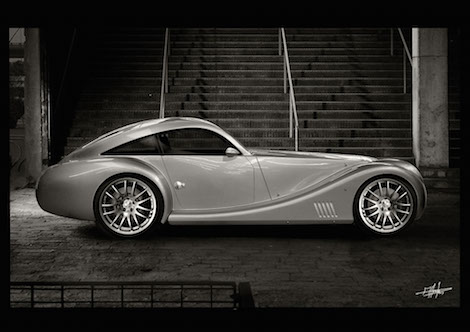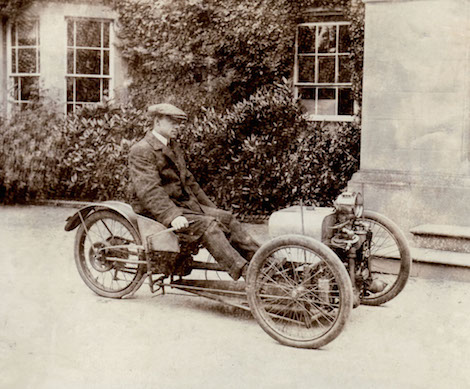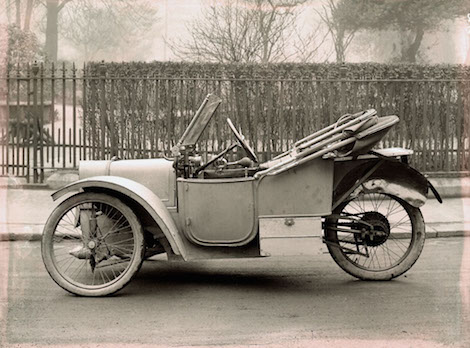Few modern car manufacturers can trace their history back to 1910, certainly not as an independent company or without various degrees of bankruptcy or buyouts by larger companies. Even fewer still can lay claim to be still producing, fundamentally, the same car more than 100 years later. Certainly Ford isn't running Model As off the production line any more and the Benz Patent-Motorwagen has long ceased production.
The first car produced by the Morgan Motor Company in 1910 was the three-wheel 'Runabout' cyclecar, a personal vehicle for founder Henry Frederick Stanley Morgan (or HFS as he was known throughout the industry). The cyclecar became a favoured type of 'car' at the time due to being classed as a motorcycle and avoiding the higher tax rate of rivals such as the Austin 7 and original Morris Minor.
Fitted with a 7hp Peugeot V-twin engine the Runabout excelled at motorsport events such as the London to Exeter Trial and reliability events at Brooklands Autodrome, but proved unsuccessful with the public due to its single-seat configuration and old-fashioned tiller steering system. A two-seat version, launched in 1911 and fitted with a steering wheel, was much more successful with posh London department store Harrods featuring as the first dealership.
The arrangement with Harrods led to the production of special Harrods-bodied Runabouts and such was the demand that in December 1913, a mere three years after the first car, Morgan purchased a plot of land in Malvern on which to construct two large workshops - a location that Morgan still occupies.
The outbreak of World War 1 curtailed production of Morgan cars but such was the simplicity of the design - tubular frame chassis with minimal coachwork - that Morgan was one of the first manufacturers capable of getting back to full production after the war. One of the first post-war customers was flying ace Capt. Albert Ball of the Royal Flying Corps, who ordered a special-bodied car, one that was named Aero in his honour.
Throughout the 1920s the factory in Malvern continued to grow as new models were added to the range including the four-seat 'Family' runabout and a Super Aero sporting model that featured a more streamlined body than the original Aero. Morgan even introduced a commercial Delivery Van based on the three wheeler chassis.
In 1936 Morgan broke from convention by displaying a four-wheeled car at the London and Paris Exhibitions. The new model was called the Morgan 4-4 to differentiate it from the three-wheeler, indicating four cylinders and four wheels. The car was an immediate success and was quickly followed by a four-seat 4-4 Roadster and Drophead Coupe.
So successful was the 4-4 that when production restarted after World War 2 the final three-wheelers were produced for the export market from a stock of pre-war parts before the company wholly focused on four-wheel models. The introduction of the Plus Four model in 1949, complete with a 68hp engine (eventually rising to 100hp), meant that Morgan had two distinct models in its line-up, with the 10hp 4/4 serving as the 'everyman' car to the Plus Four's racer.
To prove the credentials of the Plus Four, Morgan entered a higher performance version - the Plus Four Super Sports - in to the 1962 running of the Le Mans 24 hours where it won the 2.0-litre class before being driven back to the UK on public roads.
In 1966 the Triumph TR engine was nearing the end of its life and a suitable replacement was sought. The Rover Motor Company offered the forthcoming aluminium Rover V8 engine. The Morgan Plus Eight was announced to the public at the Earls Court Motor Show of 1968. That very first car, MMC II, would later see victory at the BRDC Production Sports Car Championship in 1978 and the BRSCC Production Sports Car Championship in 1979 driven by Charles Morgan, grandson of HFS Morgan.
The Plus Eight would remain relatively unchanged until 1989 when the capacity of its Rover engine increased from 3.5- to 3.9 litres. At the time German magazine Auto Motor und Sport crowned the Morgan Plus Eight the fastest car they had ever tested in fifth gear. The Plus Four was reintroduced in 1985, originally with a Fiat engine but this was soon replaced by a Rover 2.0-litre unit. A Supersports version, piloted by long time Morgan driver Rick Bourne, was entered in the London to Cortina Pirelli Marathon rally, claiming second place.
Throughout the 1980s and 1990s the Morgan Motor Company continued building the classic range of sports cars, the 4/4 being the entry level model, the Plus 4 for those who required a little more performance and the very quick Plus 8 representing the top of the range.
In the mid-1990s a remarkable new Morgan began to take shape. In order to remain competitive on the race track and to maintain Morgan's reputation for producing world class sports cars, Charles Morgan decided to develop an entirely new chassis. Still assembled around a wooden frame, but constructed of lightweight aluminium, the Aero 8 was powered by the same 4.4-litre V8 engine as used in the BMW 540i and X5 4.4i.
Various iterations of the Aero 8 were produced including the Aeromax (as owned by Richard Hammond and Rowan Atkinson), the targa-roofed Aero Supersports and the hard top Aero Coupé. Perhaps the most famous version however was the Aero 8 GT, a car entered into the Le Mans 24 hours to mark the 40th anniversary of the Plus Four Super Sports victory.
In 2010 the Morgan story turned full circle with the announcement of a new three-wheeler. Fitted with a modern V-twin engine and Mazda five-speed gearbox the three-wheeler is still based around a tubular frame chassis as the original 'cyclecar' was in 1909.
The modern three-wheeler is said to offer the "joy of driving cars from the 20s and 30s, but with none of their fragility or temperament." What's the bet they'll be doing the same in the 2020s and 2030s?

